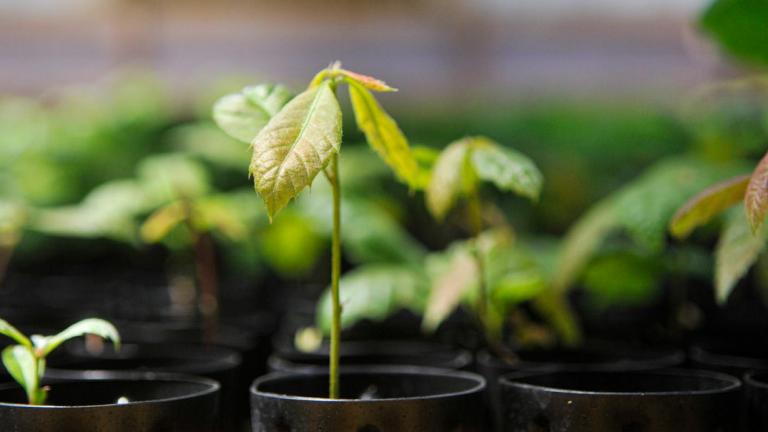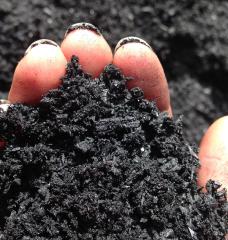
This story by ESI Journalism Fellow Nora Hertel was originally published for The St. Cloud Times, where it appears with additional photos and resources.
___________
By Nora Hertel
DULUTH — Julie Etterson pursued a central question throughout her career: Can plants evolve fast enough to keep up with the pace of climate change?
She found that they cannot.
Etterson, a biology professor and department head at the University of Minnesota-Duluth, came to that conclusion after more than two decades of research.
Now she and a slew of partners are in the midst of a project that could help Minnesota's north woods adapt more quickly to climate change.
They took seeds from southern Minnesota trees, recruited farmers to help them grow and will plant the seedlings in the northeastern part of the state where climate change has already slowed the regeneration of some iconic tree species.
It is called the Forest Assisted Migration Project. And it has drawn national attention. It's a somewhat controversial strategy, influencing a forest's gene pool.
"A lot of papers came out about it at the same time: It's good. It's bad. I hate it. I love it," Etterson said in her Duluth office in July. "They just don't agree, and I would say they still don't agree to this day. As the consequences of climate change become increasingly evident on the landscape, I think people are warming up to the idea more than they ever have before. Because something has to be done."
Minnesota temperatures have increased between 1 degree and 3 degrees Fahrenheit in the last several decades, with a faster increase in the northern part of the state. If climate change continues unchecked, much of Minnesota's forests could change to open prairie by the end of the century.
As threats from climate change loom, organizations like The Nature Conservancy and the Minnesota Department of Natural Resources are looking to plant more trees and alter forestry and agriculture practices to draw more carbon dioxide from the atmosphere and deposit it into plants and the soil where damage from the greenhouse gas is limited. Plants do that naturally through the process called photosynthesis.
"A tree can only sequester carbon if it survives. And right now, the boreal constituents of the North Shore forests are not surviving," Etterson said. Many are dying and not regenerating. Even the most common aspen species are not prepping their next generation as they used to.
Boreal forests are home to moose and many coniferous trees and are known for long and snowy winters.
The Nature Conservancy has worked with Etterson on the assisted migration project for years and will be one of the biggest buyers of seedlings next year. The University of Minnesota Duluth planted 825 seedlings into a research plot in September.
Roughly 50,000 other seedlings will go out in the spring. Buyers include three Soil and Water Conservation Districts, Minnesota Power, Rajala Woods Foundation and The Nature Conservancy.






